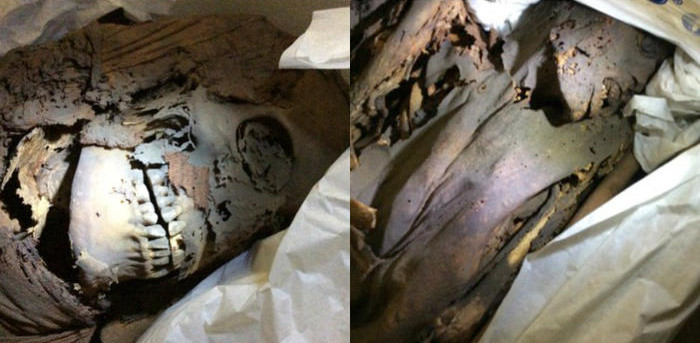Egyptian mummy 4.200 years old can die from cancer
Protein samples taken from ancient Egyptian mummies show that they can get infections and cancer.
According to Live Science, in the report published in the Philosophical Transaction of the Royal Society A magazine on September 19, the international team from Australia and South Korea found the cause of the death of ancient Egyptians by taking protein from skin samples and muscles of mummies 4.200 years old.
The team collected 4 skin samples and a muscle biopsy sample from three mummies located at the Egyptian Museum in Turin, Italy. The mummies date from 2181 to 2055 BC (during the First Chaos period), excavated at the cemetery in Assiut and Gebelein, Egypt between 1911 and 1920 in the project by Ernesto Schiaparelli, the researcher. The ancient Italian is in charge.
Two mummies at Assiut, including a woman named Khepeshet and a man named Idi , were buried with many objects in the sealed wooden coffin, while the mummy in Gebelein was in a coffin made of hollow stems.
The team took more than 230 proteins from mummy samples and found evidence of inflammation, infection and signs of cancer. When analyzing skin tissue of Khepeshet mummies, they find a protein that is a sign of a serious immune response.

The cause of death of ancient Egyptian mummies may be due to infection and cancer.(Photo: Macquarie University).
"The collection of these proteins is strongly associated with bacterial lung infections, such as tuberculosis. This could be the cause of this woman's death," said Paul Haynes, Macqurie University. review
Idi mummy is also likely to suffer from a deadly disease. The results of analysis of skin and muscle samples indicate a large number of proteins involved in inflammation and immune response.
In Idi's specimen, the team discovered two proteins, DMBT-1 , which inhibits tumors, and transglutaminase . Haynes explained that the increased amount of DMBT-1 and the transglutaminase enzyme often corresponds to the development of pancreatic cancer.
"Idi may have pancreatic cancer or some other cancers," Haynes said.
The team only got a few proteins from the third mummy, so they could not make a detailed conclusion about the cause of death of this person."The skeleton is not buried in a closed coffin but placed in an empty log. The exposure of the mummy to the elements in the environment can cause the protein to drop , " Jones said.
The first Chaos period was Egypt's serious period of political turmoil, drought and starvation, explained Jana Jones, Macquarie University.
Although there is little information on the health status of the population during that period, there is certainly a shortage of water and food that weakens the immune system, leading to infectious diseases such as malaria and tuberculosis. , Leishmania parasitic disease and other contagious intestinal infections.
"Our research provides a historical context for diseases that still exist today , " Jones said.
- Cancer tumor in Egyptian mummies 2,000 years
- Study 2,500 year mummy of 14-year-old boy
- Egyptian girl mummy full of jewelry
- Egyptian mummy wearing an intact mask after more than 1,600 years
- Egyptian mummy 3,000 years of eternal rest by the people of today
- New discovery about 2300-year-old Egyptian mummy
- Decode the mystery of the Egyptian mummy collar
- The screaming mummy was intriguing in the Egyptian tomb
- Mummy has brain, no heart
- Add new findings from ancient Egyptian mummies
- Inside the mummy, a 2,000-year-old girl
- Strange tattoos on the mummy of 3,000-year-old Egyptian women
 Discovered an ancient centipede fossil 99 million years old
Discovered an ancient centipede fossil 99 million years old Discovered bat-like dinosaurs in China
Discovered bat-like dinosaurs in China Discovered a 200-year-old bronze cannon of the coast
Discovered a 200-year-old bronze cannon of the coast Discover 305 million-year-old spider fossils
Discover 305 million-year-old spider fossils